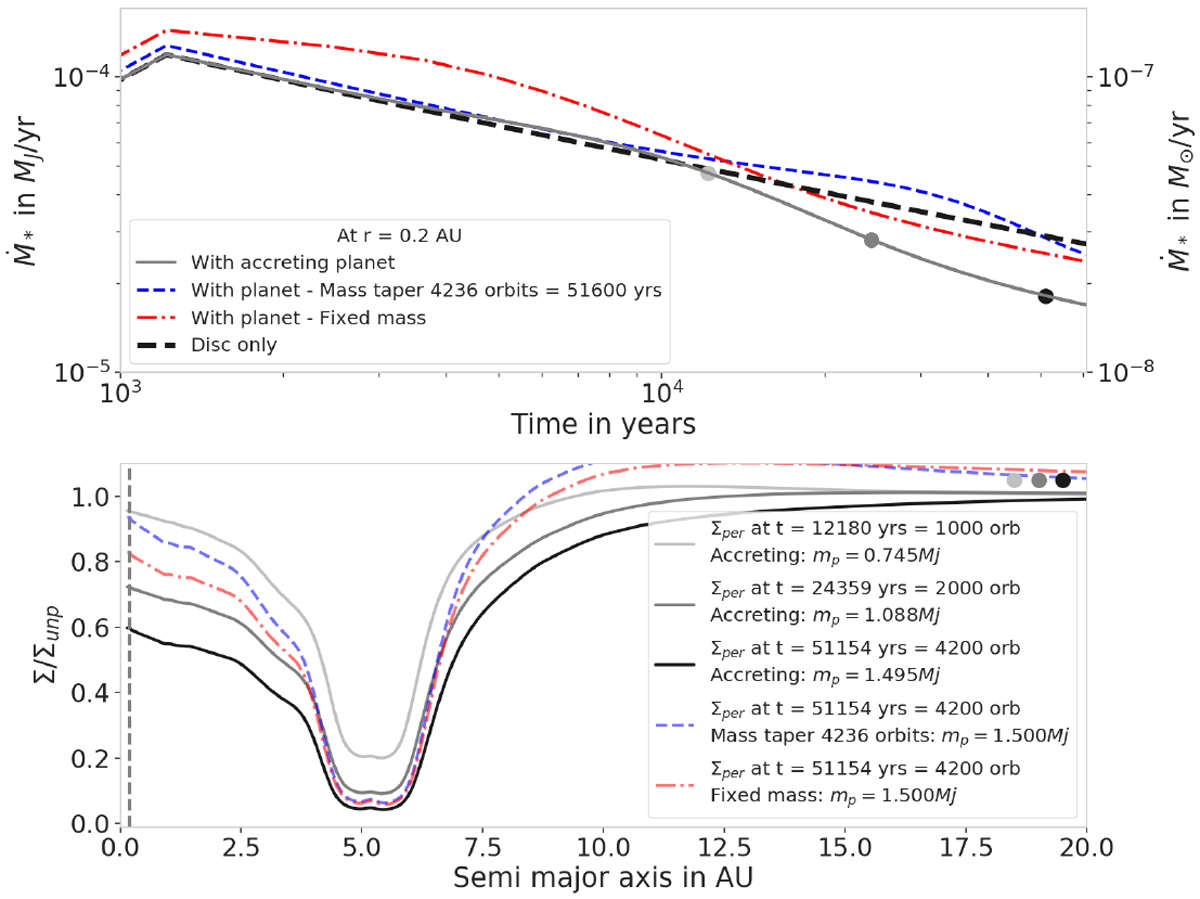Fig. 6

Influence of planetary gas accretion on the stellar gas accretion for our fiducial disc parameters (h = 0.05, α = 10−2). Top: time evolution of the stellar gas accretion rates at the inner disc (0.2 AU). The different lines represent different simulations: with an accreting planet (solid gray), with a mass-tapered planet (dashed blue), with a fixed-mass planet (red dotted dashed), and without a planet (bold black dashed). We can see here that an accreting planet decreases the stellar accretion rate. Bottom panel: perturbed surface density at three different times for the accreting case and after 4200 orbits in the mass tapered and fixed mass cases. The dashed vertical line is located at 0.2 AU, where we measure the stellar accretion rate. The three different times correspond to the dots in the upper panel. The time evolution of the perturbed gas surface density shows how the inner disc is slowly depleted by the viscous stellar accretion but also by the accreting planet. In comparison, the mass tapered and fixed mass cases present a less depleted inner disc, due to the absence of planetary gas accretion (see also Fig. 3).
Current usage metrics show cumulative count of Article Views (full-text article views including HTML views, PDF and ePub downloads, according to the available data) and Abstracts Views on Vision4Press platform.
Data correspond to usage on the plateform after 2015. The current usage metrics is available 48-96 hours after online publication and is updated daily on week days.
Initial download of the metrics may take a while.


